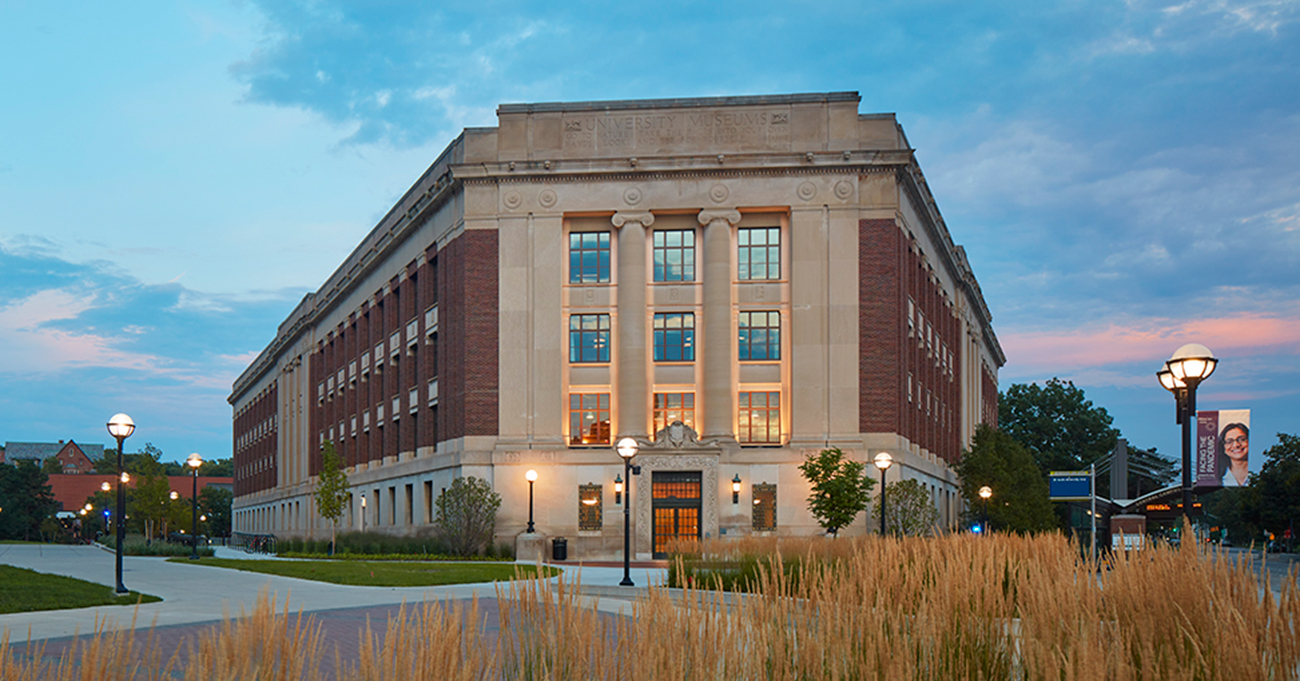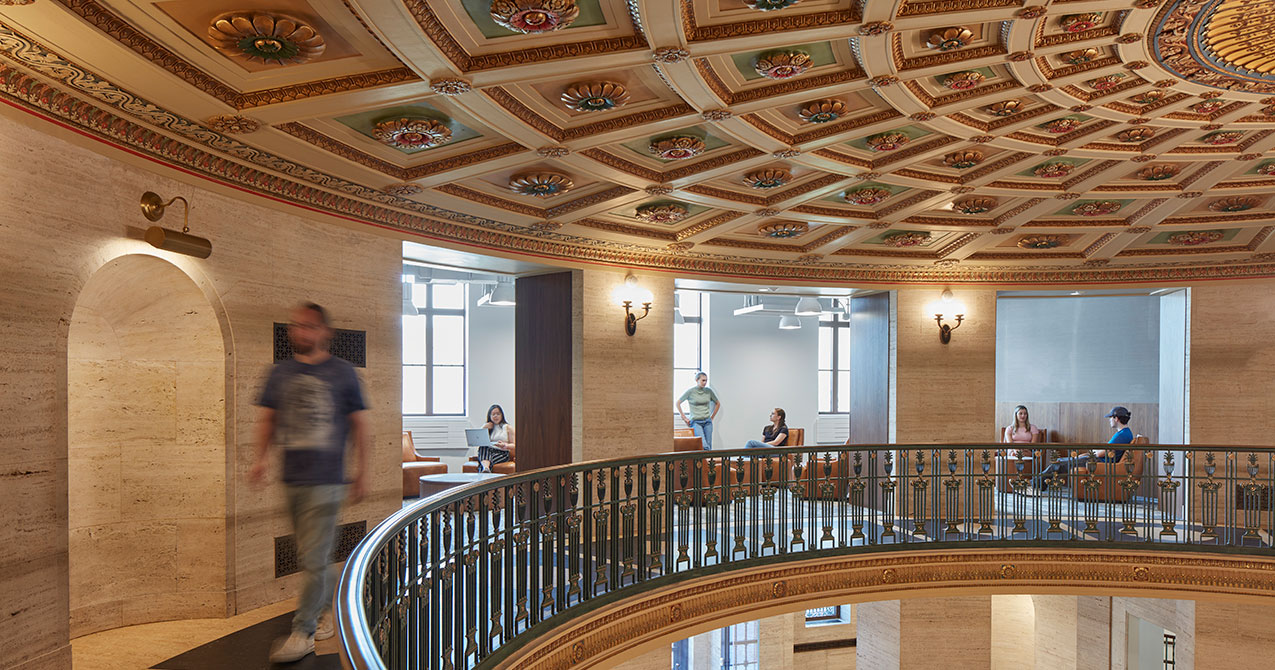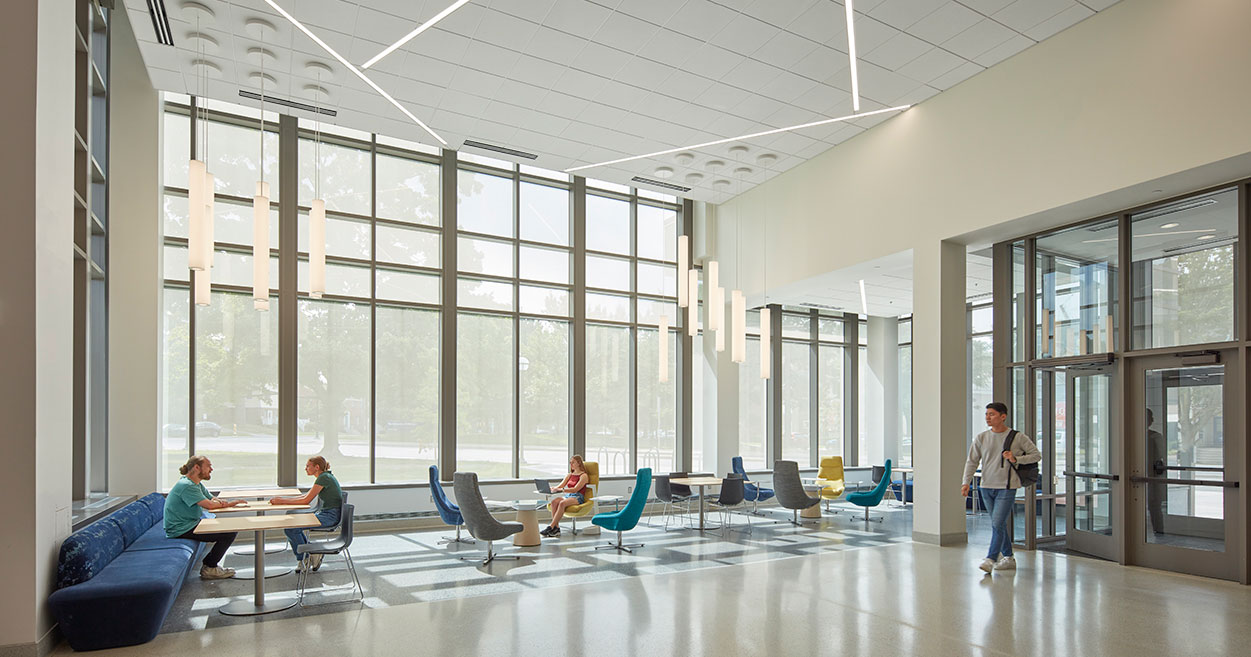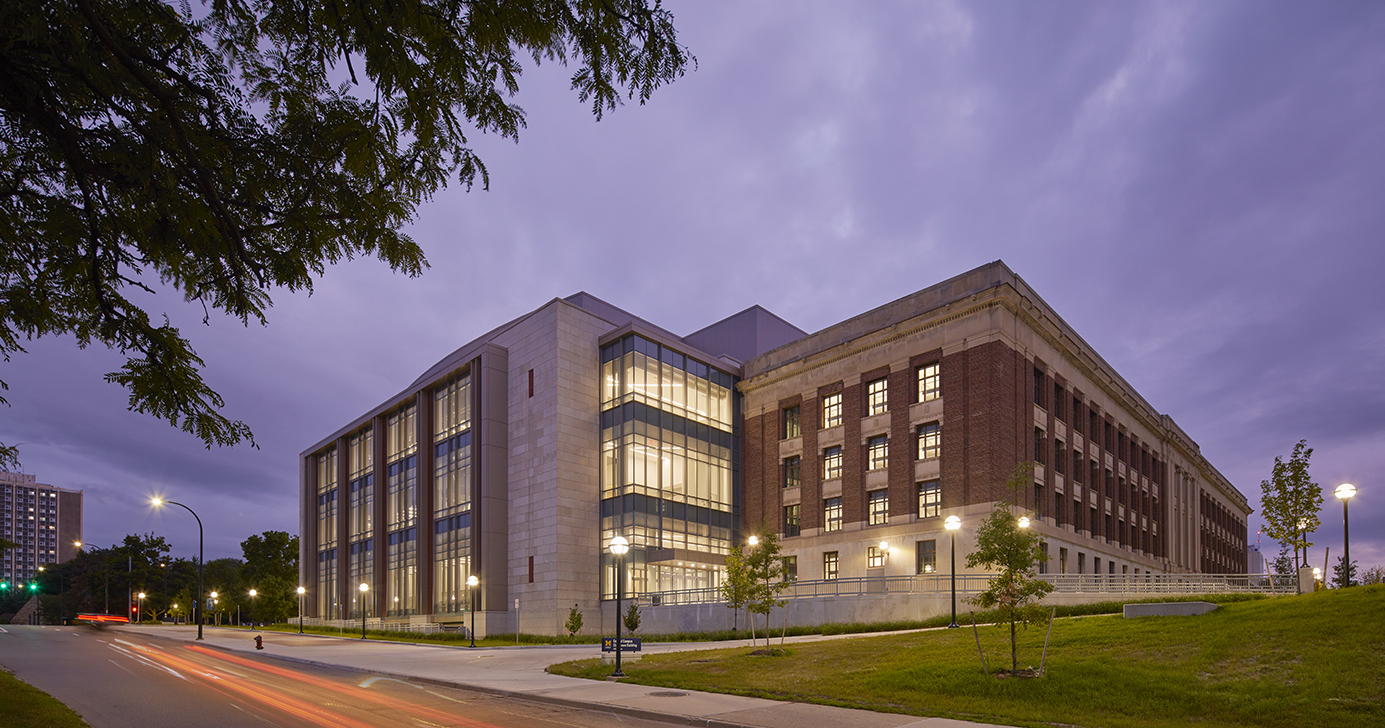
The architecture and design industry is rife with buzz words and over-hyped trends. Adaptive reuse is not one of those trendy topics—in fact, adaptive reuse is one of the best responses we, as architects, can provide to some of the most pressing challenges of our time, from dwindling natural resources to reducing the effects of climate change.
We had an opportunity to illustrate that at the Tradelines conference in Scottsdale Arizona, where I presented SLAM’s recently completed project at the University of Michigan. Together with our client Susan Monroe, Capital Projects Manager at the University of Michigan, and the architect of record on the project, Chris Vogelheim, Principal, HED, we presented the unique impacts of this 235,000-SF effort that has effectively redefined academic relationships across the institution’s campus.

The greatest way to keep the spirit and history of a university alive is to not just embrace campus heirlooms, but to re-energize them and bring the student body together in new and innovative ways. People think of heritage as a recall of the past. The Ruthven Museum is where the heritage of a renovation is energized with calculated design moves that create a nexus for the campus.
The original building began as a natural history museum and the president at the time, Alexander Ruthven, loved the idea of connecting nature with people there. Going back to that naturally connective setting was the right path for the university. Throughout the interior, we removed partitions, added new windows, and extended existing apertures to maximize natural light in the building. Once we peeled it back and everything opened, we began to expose some of the historic experience and celebrated the original rotunda that was there.

The renovation of the historic rotunda created a “one door” portal. This introduction to the building connects all building users, from administration to students to professors, in the same setting on the same footprint, and they move forward together—literally and figuratively. The senior administration, the president, the provost, major department heads, and even the Board of Regents, now reside in one new location, so the entire power structure of the university has shifted to create a new center by occupying the renovated Ruthven Museum Building. The President is more integrated with the students than ever before.
Co-locating everyone to create this cultural shift was a leap of faith. Our client put their trust in their design team to curate an experience that supports spaces for an exceptionally diverse culture. In the new Academic Loft, we brought multiple groups together to support a major cultural shift. Math students, English majors, and Biology majors can all intermingle and exchange ideas in social zones adjacent to the classrooms much more freely than ever before. Space was also prioritized for more individual time, as well. In the Ruthven Building, the university requested research labs, quiet zones, and a classroom space that supports special accommodations in testing, for those who need more time or focus.

By leveraging an iconic part of campus, we used the heritage of the institution to help emphasize the impact of the project. The addition of a 100,000-SF new building directly behind the Ruthven building changes the central focus of the university. It connects this primary academic hub along the Diag, which is the famous diagonal part of their campus, with their 2,000,000-SF hospital, research, and residential facilities into one complete connection. It connects to their primary transportation hub on the campus, and then their other two campuses. This is a huge dynamic shift for the university to create the best outcomes for their students, and create highly interactive spaces where they can work and live in a new collaborative environment.
We connected the renovated building with the new building primarily via glazing, to be respectful of the history and simultaneously illuminate the enhanced site. Within the building, our key thought was to make it memorable and flexible, while still adaptable to the 10,000 daily building users from very diverse backgrounds—275 degree programs across 19 college schools and colleges, to be specific. The building itself is 50% social space and 50% classroom space, so as science classes are replaced by philosophy which are replaced by communications and media, there is great opportunity to connect through the ample public space and support rich exchanges along the way.
The project is inherently sustainable: rather than knock down the Ruthven building, it’s retained its carbon footprint. The idea of bringing natural light and maximizing green landscape was a key piece that led to the concept that this building was like a locket in some ways. The position of the building has created its own living, green quadrangle, with many verdant vantages from within the building.
We managed to transform the skin of the existing building to a high performing envelope by adding new windows and analyzing the envelope for ways to reuse existing bricks. We also looked at ways to connect the two buildings effectively. The addition of the new building allowed us to approach the building systems in a more efficient way, overall.
The renovated Ruthven Museum Building and its addition also has the public transportation hub at its entrance. The building serves approximately 10,000 students, and numerous staff and support. The building’s proximity to public transit can help building users reduce their reliance on private or single occupancy cars, in favor of buses and bicycles.
Through our combined strategies, the building achieved LEED Gold certification.
Learn more about the building design.
